Last Updated on July 16, 2023
If you want to learn how to start a farm completely from scratch, this farming guide is for you. How would I know that? Because I have personally bought and started two farms from scratch, farmed them using sustainable, organic, and permaculture farming methods, and sold goods produced from the farms direct-to-consumer. I want to share everything I know with you in this one complete guide and make it easier than ever for you to buy a farm, learn how to farm it, (whether it’s to provide for your family, to make a business out of it, to homestead, or just as a hobby) and to show you the tools you’ll need to get started.
How I Became a Farmer
I grew up in a agricultural family but only around conventional farming as a kid. That type of farming requires thousands of acres and big expensive machinery to make it successful. I knew from that experience that I had no interest in that type of farming.
The idea of having a small farm, however, has always intrigued me. It wasn’t until later in life that I started to learn more about sustainable agriculture, organic agriculture, homesteading, and hobby farming. The more I learned about these the more I wanted to buy my own farm and practice these things with my family.
I knew I had to experience this type of farming first-hand to understand exactly how it worked so I decided to intern on a sustainable and organic farm for a year. It was there that I learned how to farm the land in a way that didn’t deplete the land nor destroy the environment but, instead, stewarded the land well, leaving it in a much better condition than it was before it was acquired. Best of all, it provided healthy food for the people that were fed from it.
I learned how to manage animals through pasture-based systems that didn’t confine them but let them thrive in nature while eating from the land and giving back to it so it produced more abundant pastures each following year.
I learned more about gardening in a way that didn’t require synthetic pesticides or other harsh chemicals but instead gave the plants an environment to thrive in an ecosystem where these types of things were not needed.
I learned how to sell your farm goods directly to the consumer using direct the Community Supported Agriculture (CSA) model, farmers markets, and direct sales.
After all of this, I took my experience and ran with it. I have purchased two different farms over the years and applied these things to my own farms. If I were going to write a book on how to buy a small farm and start farming it, this would be it.
Why Should I Start a Farm?
In order to start a farm from scratch you need to know why you want to start farming in the first place. This is a question I can’t necessarily answer for you personally because we each have our own ideas, convictions, and desires but I can give you some things to think about.
For me personally, I have convictions about how we are treating the environment and stewarding the land. I want to farm in a way that stewards the land well and provides healthy food for the people that are fed from it. I don’t want to deplete the land but, instead, leave the land in better condition than it was when I acquired it.
Others are just interested in starting a small hobby farm for fun or, at the very minimum, to provide good food for their family. Again, this is good too and my farm falls into this category as well.
Some people want to homestead which means they want to try to be as self-sufficient as possible and live off the land as much as they can. The homesteading movement has grown like crazy over the past 10 years as more and more people are wanting to disconnect from the rat race and live more meaningful lives by being connected to the land they are fed from.
There is also a huge movement of people that just want to farm in their backyard and I also think this is awesome. At the bare minimum, most people have at least enough room for a garden and some chickens. Working in your backyard farm can be a very life-giving experience.
Whatever your reason is for wanting to start a farm will directly affect the type of farm you need to acquire. Make sure you are settled on this before you begin.
What Are the Different Types of Farms?
Surprisingly, there are lots of different types of farms. Below I hope to define the most common farm types that you have probably heard about. Keep in mind that some of these farm types will overlap and I will try to show you why that is the case.
- Conventional Farm: Sometimes called industrial agriculture or commercial farming, conventional farming involves large amounts of inputs including the use of synthetic pesticides and fertilizers on both genetically modified (GMO) or non-genetically modified crops. The crops are usually grown in a monoculture system where one type of crop is grown in a very large area. For animal management, conventional farming typically utilizes Concentrated Animal Feeding Operations (CAFO) where a large number of animals are typically confined in small areas and fed intensively from a single feed source to increase profitability. Conventional agriculture usually requires lots of land, expensive equipment, and a large infrastructure to be profitable.
- Sustainable Farm: Sometimes considered beyond organic, regenerative agriculture, or a part of permaculture, sustainable agriculture is a farming system that manages plant and animals in an environmentally friendly way, requires low inputs, attempts to be as self-sustaining as possible, and seeks the well-being of animals under its care. Sustainable farming typically uses pasture-based systems for animals where they receive a large portion of their diet from nature, are rotated through paddocks, and not confined in a small area or enclosure. Gardening is done using organic methods and employs rotational crop systems that give back to the soil instead of depleting it. Sustainable farmers typically sell their goods directly to the consumer through direct sales, Community Supported Agriculture (CSA) memberships, and farmers markets. The goal of sustainable agriculture is to steward the land well while feeding people healthy food. Check out our articles on the latest sustainable farming statistics and permaculture statistics to see the latest trends.
- Organic Farm: Organic farming is a type of farming system that doesn’t utilize synthetic pesticides or fertilizers and doesn’t grow genetically modified (GMO) crops. In the U.S., the word Organic is controlled by the USDA. Because of this, the USDA must certify your land and your farming methods in order to use the Organic label. Contrary to popular belief, organic farming can still fall under the umbrella of conventional farming and industrial agriculture. This is especially true if crops are raised using a monoculture system where a single type of crop is grown over a large area. The Certified Organic label also doesn’t completely take into account animal welfare. Certain animals can still be confined in small areas as long as they are fed organic feed that doesn’t contain animal byproducts or growth hormones. (Note: In the U.S., you can still utilize organic methods on your farm even if you aren’t certified organic. You just can’t say your farm is Organic. You can say, however, you farm using organic methods or your crops are organically grown. See the difference?) Check out our article on the latest organic farming statistics to see the latest trends.
- Hobby Farm: A hobby farm is a farm that is not a primary income source but provides supplemental income or is operated purely for pleasure. Hobby farming can still utilize the above farming systems but is typically done with less acreage.
- Mini Farm: A mini farm is a very small farm usually done in your backyard or in a small open lot. Mini farming can still utilize the above farming systems as well but, because of the small space, farmers are typically limited as to what they can grow and raise.
- Urban Farm: An urban farm is a farm located in a city, typically in an urban environment, that cultivates, processes, and distributes food in the area in which it is located. Urban farming can be very creative and can be a great way to reclaim spaces like abandoned lots where buildings may have been previously located.
- Homesteading: The act of homesteading is an agrarian lifestyle that seeks to live as self-sufficiently as possible and live off of the land that you live on. While homesteading can utilize the above farming methods, it typically extends beyond that. In addition to farming, homesteading can also involve food preservation, textile production, carpentry, and other trades for home use or to make items to sell.
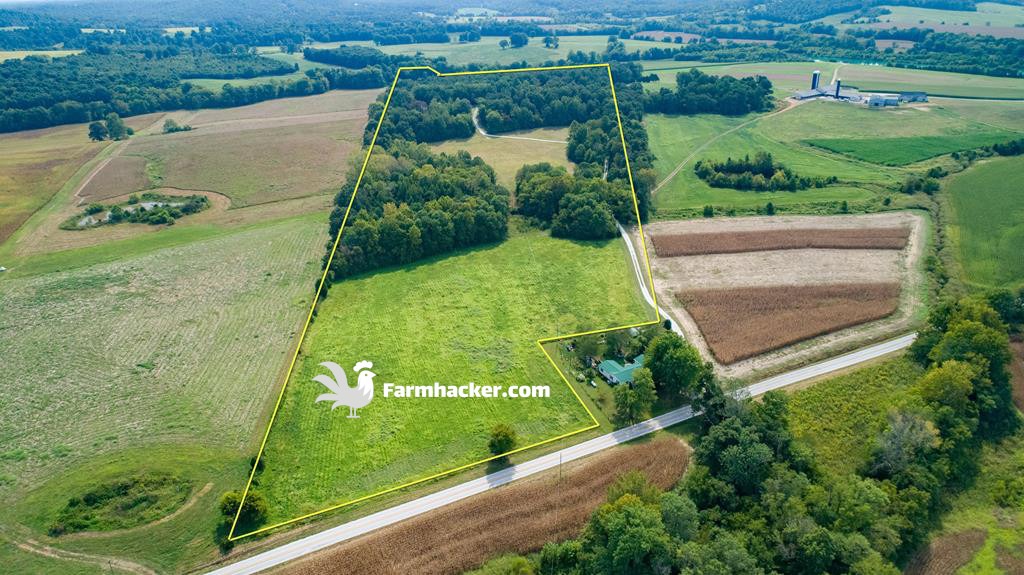
How Many Acres Do I Need to Start a Farm?
The answer to this question largely depends on what type of farm you are going to start. It also depends on several other factors like climate type, hardiness zone, soil type, landscape (hillside or flat), access to water, (ponds, creeks, springs, well, county water, cistern, rain catchments), and zoning restrictions. Because of all of these different factors, there is no one size fits all answer. However, I will do my best to give you some general guidance.
First things first, if you were to start a conventional farm, you may need a thousand acres and lots of expensive equipment to be profitable. This is not the type of farm we are covering in this guide.
Sustainable farms typically need a lot less acreage because they are not built around one type of crop or one type of animal, the reliance upon expensive machinery, or the commodities market. They are usually biodiverse and use a mixture of plant and animal systems to be as self-sustaining as possible and sell their products directly to the consumer.
Some examples of sustainable farms would be Joel Salatin’s farm called Polyface Farm. Joel’s farm is about 550 acres in total size but only has about 100 acres of open land. Joel has been quoted saying that it depends on where you are located but they are generating one salary off of 25 acres.
My last farm was 51 acres total and about 20 of that was open land. I used some of the woods for my pastured pork operation and my goats.
As far as organic farms go, if you are thinking of a USDA certified organic farm then this may fall under the same umbrella as a conventional farm. Again, it depends on how you plan to farm it. If you plan to row-crop it using organic methods, you may need hundreds of acres and expensive equipment. If you plan on farming it sustainably but using organic methods, it would be the same as a sustainable farm above.
If you just want to start a hobby farm or a homestead, I would consider something around 10 acres. In general, if you have livestock, you need more land than if you are just raising a garden. And the type of livestock will also determine what size farm you would need. Cattle require more land than pigs and pigs require more land than chickens. The size of the farm you would need can fluctuate depending on what you are doing. For me personally, at least 10 acres would be an ideal size for a hobby farm based on what I would do with it.
Here is something else to consider. Where I live, if you own 10 acres or more it is taxed as a farm which has a much lower tax rate than if it were all taxed as residential. So that is an added bonus for us here to buy something over 10 acres. Check with your county tax office to find out if they have similar laws.
How Do I Buy a Farm?
When you are ready to buy a farm you are probably wondering how do you buy land, especially if I don’t have a lot of capital? There are several things to consider.
If you wanting to buy a farm with lots of acreage and you plan on deriving your sole income from the goods you produce on your farm, the first thing to do is to consider leasing one. Why you might ask? Here are a few reasons.
The first reason is that it’s the easiest way to get started. There are lots of farms out there that aren’t being used for actual farming anymore and you can lease them for a great price.
Another reason is what if you find out that farming is not for you? Once you have purchased a farm, you are stuck with the mortgage at that point. Leasing a farm can be a much easier way to ease into farming and you can always not renew the lease if you change your mind.
Also, you may just simply not be able to afford a mortgage for the amount of land you will need for your farming endeavors. Leasing land can give you time to build your farm revenue up to a place where you can eventually afford to buy your own land. And by then, you may have a totally different idea on what type of farming you want to do.
If you are wanting to buy a hobby farm or homestead then I would consider buying a small farm instead of leasing one. Since your primary income will come from off the farm, you will be able to support your mortgage from your day job.
When you are ready to buy your farm, be sure to apply for a farm loan through several different institutes so you can explore all your options.
Farm Credit is my personal favorite farm lender. They offer several different options and have one of the longest fixed interest rate options for farms out of all the lenders out there.
You should also check with local and regional banks in your area. By local, I mean banks that are either local to your town, area, or maybe even just your state. Local banks typically have more consumer friendly and flexible lending programs than large national banks do. In other words, there can be a lot less red tape to go through using a smaller bank when seeking financing for a farm.
The USDA offers several different types of loan programs as well. I’ve personally never used any of them but that’s what they are there for.
You can try to seek lending through all of these institutions to find the one that has the best options based on what you are wanting to do and your current financial situation.
Where Should I Start a Farm?
Deciding on where to start a farm depends primarily on what type of farm you are wanting to start. If you plan on deriving an income from your farm and you plan to sell your farm goods directly to the consumer, you will probably want to start a farm somewhere near a metropolitan area. The truth is that people in larger cities are typically more open to direct to consumer purchases from farmers, participating in CSAs and buying from farmers markets. Larger cities typically have better farmers markets as well.
It is possible to sell directly to consumers in smaller towns but keep in mind that you will have to work much harder to create a market for yourself. You may also need to drive more to reach all the cities around you to give you access to a larger market.
If you are wanting to start a hobby farm then you will probably want to be somewhere near your place of work or the city that you work in since your day job will still be your primary source of income. And since you will probably be looking for less land, this will open up a lot more options for you.
If you are wanting to start homesteading then you will obviously have a lot more options as far as where you can start a farm. There is a lot of cheap land out there but most of it is pretty remote. Just keep in mind that the farther out you are the harder it will be to purchase items you need, visit with friends, and see your family.
What Are Some Things to Look for When Buying or Leasing a Farm?
There are several things to look for when buying or leasing a farm. One of the most important things to look for is a farm with a good water source. How are you or your animals going to survive without water? Does the farm have access to a public water source, a well, or a cistern? You will need at least one of these, especially if you are planning on drinking from this water source yourself.
Does the farm have a creek, pond, or spring? These can be great additional water sources for your animals, especially when your animals are far away from your central water source. Ponds can be easier to deal with for the simple fact that you can put a fence all the way around them. Creeks can be a little more difficult, especially if the water rises and falls which makes fencing around it hard. Creeks can also run dry during certain times of the year while a large pond can hold water all year long. A spring that runs all year long would be an amazing addition to any farm. Free, fresh flowing water that can be controlled is always best.
Another thing to consider is how much open pasture does the farm have? While it is true you can use some of the woods for certain farming systems, open pasture is what you’ll primarily rely on. Your ruminant animals will need the pastures and you will need open space for your gardens.
I personally like to have a farm primarily with open pastures but with at least some woods. Certain animals like chickens and pigs can also utilize parts of your woodlots. If you plan on having a wood burning stove or milling your own lumber, woods can provide a source for that as well.
If the farm is hilly it can make things difficult if you use portable coops, chicken tractors, or hoop houses. Also, hillside soil is typically more rocky and not as good for growing things. It is possible to build better soil over the years depending on your farming systems but it can take quite a while to achieve.
You should consider what type of soil the farm has and if it’s good for growing things. In the U.S., the USDA has a free tool to check what type of soil the land that you are interested in has and help you understand what that soil type means. If you are going to be primarily crop based, soil type will be even more important to you.
Also, you’ll want to know if the soil on this land is typically more wet or dry. Does the land drain well? Our first farm had very flat pastures but the soil stayed wet longer because it was located in a bottom. This can cause lots of issues for growing things or livestock use.
You’ll also want to consider if the farm has good road access. There would be nothing worse than not being able to get onto your farm because your road is washed out or the easement you need to access it is blocked. Also, road frontage can help with marketing your farm because you’ll have a great place to put a sign up advertising what you are selling.

What Type of Farm House Should I Buy or Build?
When you start a farm, are you planning on living on it? If so, you obviously need to have this question figured out before you buy or lease any land. If you aren’t sure if you should live on your farm then I would just like to say that it will make your life much easier if you can. Being able to walk out of your house and check on your animals or garden will make life a lot easier than driving over every day to do so. You are ultimately the eyes and ears of your farm so being on the land itself will help you deal with things like predators or escaped animals more quickly.
If the farms you are looking at don’t have a home on them then you have several options. Here are a few to consider.
Traditional Stick Built Home: A stick built home is simply a home framed with wood and built on-site. Almost every home you see in the U.S. is built using this type of construction. This is obviously the most expensive option but can be the easiest to get financing for compared to other types.
Pole Barn Home: This is a newer idea and one we chose on one of our farms. A pole barn home or a pole barn with an apartment can be cheaper than traditional building methods. The idea is to build a pole barn and then frame a home inside of it.
There are a few downsides to consider though. A pole barn home is typically built on a slab so you have to make sure your plumbing exactly where you want it before the slab is poured otherwise you will be ripping up concrete to change it. You also have poles every 10 to 12 feet in the exterior walls so you have to plan your doors and windows around that. And finally, it can be much harder to secure financing for a pole barn home because it is considered non-conventional.
Mobile Home: A mobile home is another option for your farm. We bought and set up a used mobile home on our first farm so we could move onto the land much faster and cheaper than building. There are some downsides to mobile homes though. First, you are limited to certain sizes. Single-wide mobile homes are pretty small but double-wide mobile homes can give you more space and feel like an actual house.
Mobile homes are typically built cheaper than other homes which can mean it doesn’t hold up as well and won’t last as long. Depending on how you set yours up, they can be also be exposed underneath creating issues for freezing pipes. Banks typically won’t consider them in the appraisal value if you decide to sell your farm. It can also be hard to use them as equity if you decide you need a line of credit. However, if you don’t care about these things they can be a quick and cheap option depending on how you buy and set yours up.
Camper Home: I personally would never recommend this as a long-term solution but it could be an option for the short-term, at least while you wait for your house to be built or set up. Some things to consider would be that you will need access to water, electric, and septic unless you want to be constantly hauling water and waste or running a generator. Campers also lose value after you purchase them so keep that in mind if you are wanting to sell it after you use it.
Non-Conventional Homes: There are other types of alternative building methods that you could consider for your farm like log cabins, cob homes, cordwood homes, and strawbale homes. The biggest downside to these is the amount of time and labor it would take you to build them. There is probably no way to get any type of traditional financing for them as well. These types of homes, in my opinion, would only be for someone who has a lot of time on their hands and can build them slowly over time when they buy a farm.
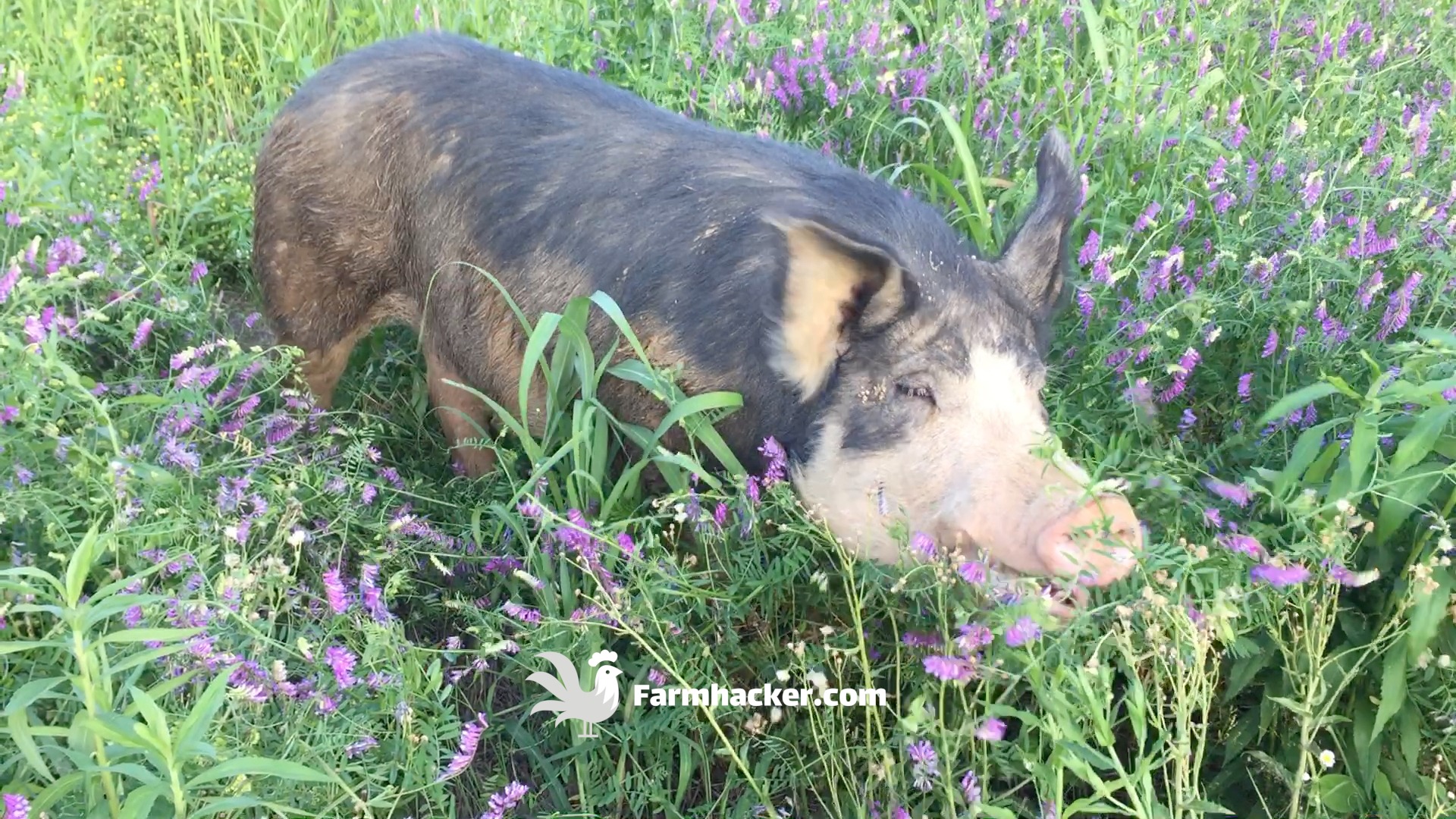
What Kind of Animals Should I Raise on My Farm?
Deciding on what kind of animals you should raise on your farm depends on what you are wanting to do when you start a farm. If you are planning on implementing sustainable farming practices and selling your farm goods directly to the consumer then chickens, pigs, and cows make a lot of sense since eggs, chicken, pork, and beef are all very popular items to sell. There are also smaller markets for turkey, goat, rabbit, duck, and duck eggs.
You should also consider choosing one of these animals to be your farm’s centerpiece. I recommend that you choose an animal that you enjoy raising and like to eat the most. If you can’t sell your meat then you will be the one eating it so choose something you like.
This will also be the one that you spend most of your energy on as far how you raise it, how much you raise, and how you market it. Having something that you are passionate about really helps the selling process. My farm’s centerpiece is pork. I enjoy raising pigs on pasture and love the taste of good pork.
What I’m not saying is to only raise this one kind of animal. On the contrary, a good farm needs a polyculture of animals that are all being utilized to continually improve your land together. Raising only one type of animal can increase the chance of disease and cause a lopsided ecosystem where that animal lives. Instead, consider rotating or co-grazing several different kind of animals throughout your farm to improve the soil and keep diseases in check.
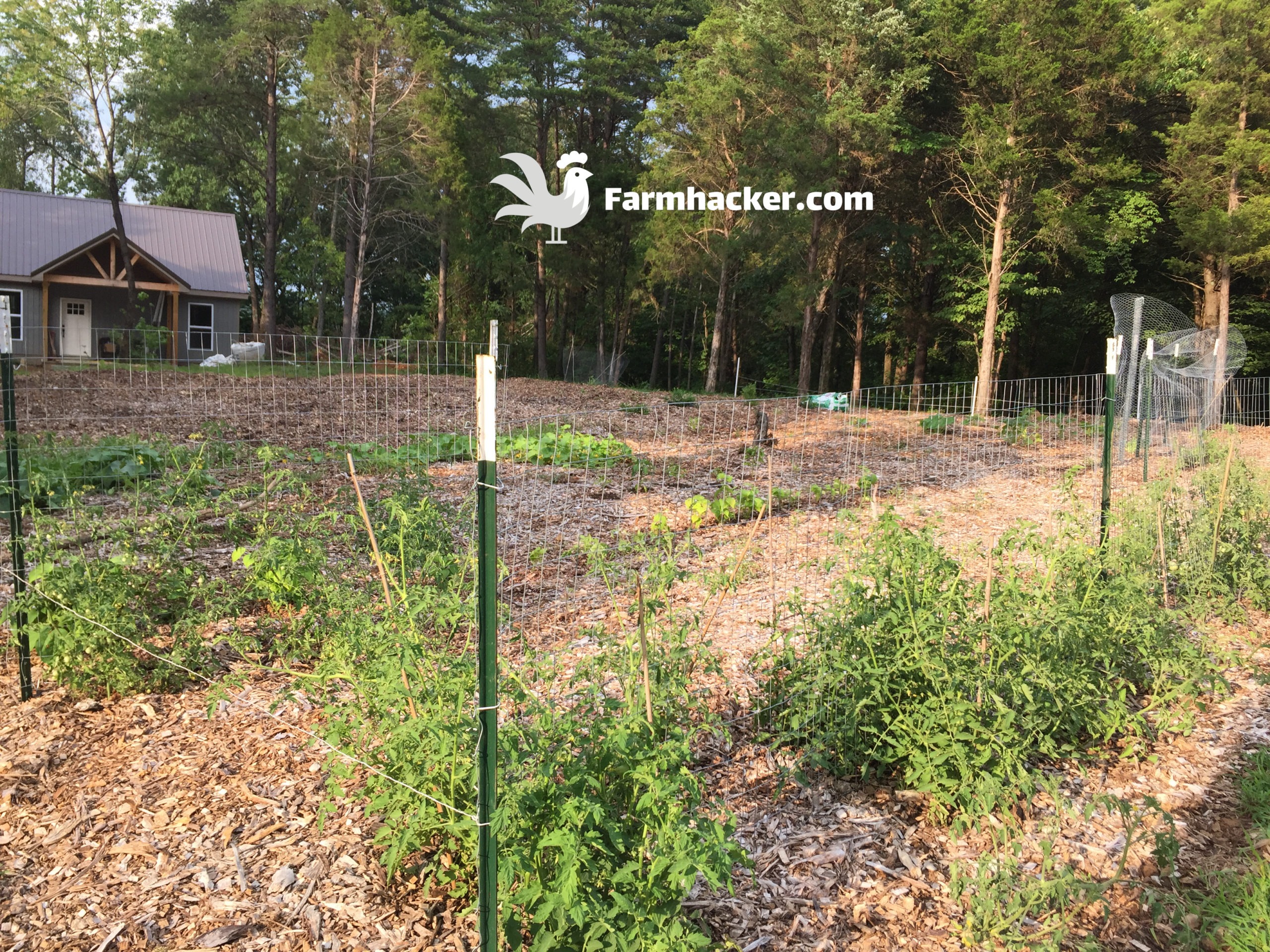
What Kind of Produce Should I Grow on My Farm?
Similar to the previous section, deciding what kind of produce you should grow on your farm also depends on what you are wanting to do when you start a farm. If you are wanting to farm it sustainably and sell your goods directly to the consumer, consider a wide variety of diversified plants that you can rotate throughout your garden during different seasons.
Some top sellers are typically things like organically grown tomatoes, lettuce, kale, sweet corn, carrots and strawberries. Other popular items can be cucumbers, squash, peppers, peas, broccoli, beans, spinach, turnips, onions, watermelon, pumpkins, and cantaloupe.
Consider growing herbs like cilantro, chives, basil, parsley, mint, rosemary, and sage. There are lots more than this but I wanted to give you an example of some of the popular ones.
You should also consider planting perennials such as blueberries, blackberries, raspberries, apple tress, pear trees, cherry trees, plum trees, peach trees, fig trees, and various nut trees. Planting perennials early on is important because it can take a few years or more before they ever produce their first fruits.
If you are more of a garden-centric farm then you can choose a few different types of produce to be your farm’s centerpiece. Remember, pick something that you enjoy growing and eating. If you can’t sell it, you’ll be the one eating it.
I have also created an article where I cover more than 105 ways to make money farming a small farm. It also includes links to additional resources that will help you get started.
What Farm Tools Do I Need?
The nice thing about sustainable farming and hobby farming is that the amount of tools you need up front aren’t nearly as much as what you would need if you were planning on running a conventional farm. When you are ready to start a farm, there are a few farming tools to consider in the beginning.
The obvious tools you’ll need are a good set of hand tools like hammers, screwdrivers, wrenches, pliers, a socket set, and a good toolbox to hold it all. A good electric screwdriver will be one of your best purchases. You will be building a lot of stuff yourself by hand so these tools are necessary.
There are also various other types of tools you’ll need to just make life easier on the farm such as a headlamp, dust mask, sweatband, and a pocket knife. You can even get some walkie talkies to get in touch with others at the house, especially, if your phone service is spotty.
There are some farming clothes that I recommend as well such as a coat, bib overalls, coveralls, gloves, rubber boots and a good hat. Keep old jeans and shirts around in case you need to get muddy.
For fencing, I recommend step-in posts, polywire, poultry netting, and a good energizer. Temporary fencing is great in the beginning because it’s cheaper, easier and much faster put up and take down.
You’ll likely need a chainsaw, a weed wacker, and loppers to take care of the trees and brush. This is especially true when you start setting up your fences and clearing your garden space.
Keep in mind you can utilize some of your animals to help with this process. For example, pigs and goats can be great for clearing out rough areas. I have used mine plenty of times for this purpose.
For a more complete list of essential farming tools, check out this article on what farming tools you need for a small farm.
How Do I Sell Produce, Eggs, and Meat From My Farm?
The three most common ways to sell your farm goods directly to the consumer are direct sales, community supported agriculture (CSA) memberships, and farmers markets.
Direct sales are pretty much what they sound like. You have customers that either come to your farm or meet you somewhere and you sell them your farm goods for cash or using a credit card. These are typically one-off sells and can be useful when you are selling items in bulk.
Community Supported Agriculture, or CSA for short, is way for customers to sign up for a farm share which entitles them to a portion of the goods produced from your farm each season. Having this income up-front can be a really big help, especially, when you need money before the season starts for your crops, inputs, animals, and other infrastructure needs. This also helps you predict how much farm goods you will need to produce since you know exactly how many shares have been sold. CSAs create a good relationship between the farmer and the customers. It allows the local community to lock arms with you as a farmer and support your farming endeavors.
Farmers markets can be another great way to sell your farm products. They typically require you to purchase a booth which gives you a space to set up once a twice a week when the market is open so you can sell your goods to the public. Farmers markets can provide an additional revenue stream on top of a CSA. This is especially true if you produce more than you need for your CSA shareholders and need to sell it somewhere else. An added benefit to doing a farmers market is that it puts you and your farm in front of more potential customers which may result in more people joining your CSA.
Before you start selling your farm goods, you need choose a farm name or use a farm name generator to get some ideas. Having a good farm name can really help sell your products. Start thinking about this even before you start a farm.

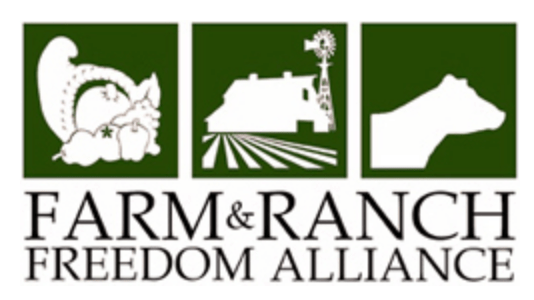
What Farm Organizations Should I Join?
When you start a farm there are several organizations that you should consider joining. My personal favorite is Farm-to-Consumer Legal Defense Fund.
The Farm-to-Consumer Legal Defense Fund is an organization that protects the rights of farmers and consumers who engage in direct commerce. In other words, they are here to look out for your best interest. Membership is cheap and you get unlimited consultations with attorneys, access to contractual documents such as herdshare contracts, buyers club agreements, and they will represent you in court if necessary on matters that are withing their mission statement at no additional cost.
Another great organization to join is the Farm and Ranch Freedom Alliance. They are an advocate for independent farmers, ranchers, livestock owners, and homesteaders. It’s easy to understand that by you selling your goods directly to consumers, you are taking money out of the hands of much larger organizations and corporations who lobby lawmakers to pass laws in their favor. The Farm and Ranch Freedom Alliance is here to represent you to those same lawmakers. They want to protect the safety, quality, and availability of our food by protecting independent producers like yourself.
Closing Thoughts
I really hope this guide and all the resources I have linked to have been helpful to you. I will continually be adding more information to it over time. I consider it a living document on how to start a farm from scratch and I truly desire to help you succeed. If you have questions, please post them in the comments below and I will try my hardest to answer them for you. Thank you for reading my guide.

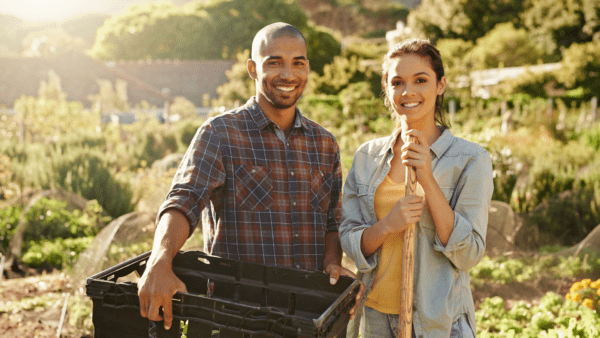
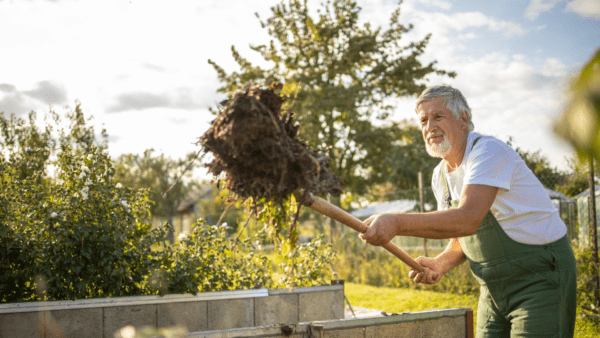
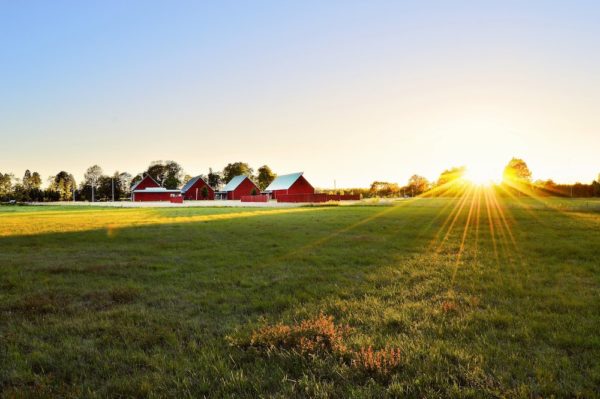
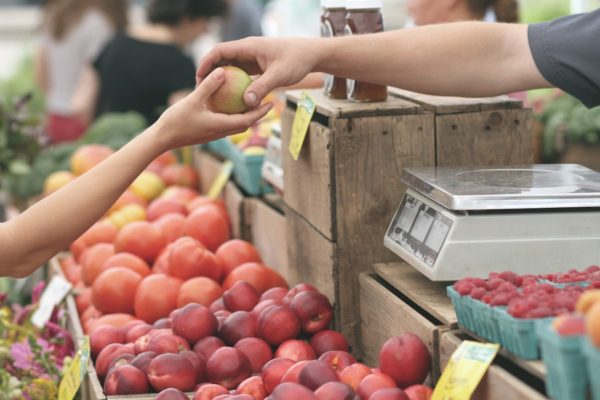
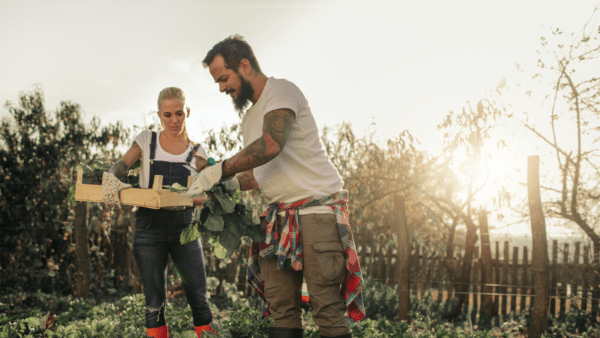
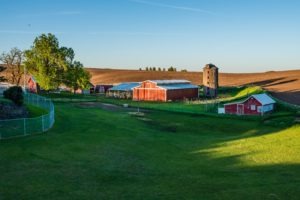
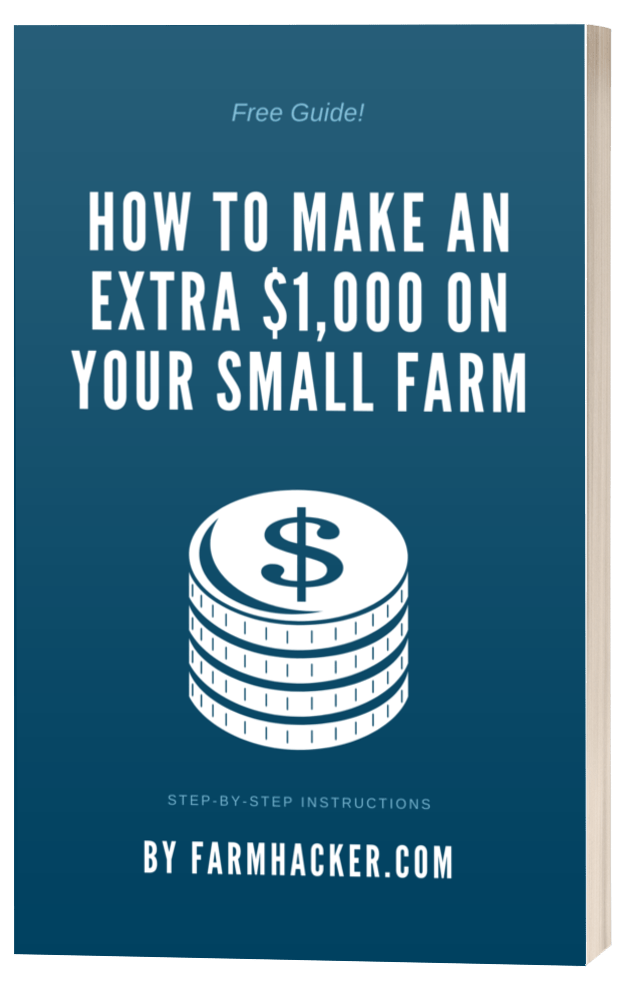

Muy buena información, gracias.
Hi, this guide is fantastic, thank you for taking the time to put it together. I have always wanted a farm, since I was a little kid. I want to do sustainable farming. My main animals being alpaca, angora goats for fiber, and then a plethora of other animals. ducks, quail, chickens, turkeys, pigs, a few sheep, and a steer or two just through the spring, summer, and fall. I also have plans for an orchard, as well as a hot house with year round vegetable production, and fruit I can’t grow in my zone otherwise. For me I’m really just starting to look into what’s required, financing, etc in my area. Leasing sounds good, except my orchard is pretty permanent and a huge commitment that takes years to build and mature, and would be a loss if I moved from the leased farm. what’s your advice?
Hi Lynae, glad to hear this guide was helpful. Here’s something else to consider. If you can’t afford a larger farm that would allow you to do all of these things, you could buy a smaller farm or house with a small amount of acreage where you can do more permanent things like growing an orchard. Then, you could lease land that either borders or is near your home to give you enough room to do everything else on like keeping livestock. You’d obviously need to be strategic about buying property near other land that could be leased. Hope this helps.
Hi Casey, Thanks a lot for this very mind refreshing guide! I knew nothing about farm since I have grown up in cities until moved to suburbs due to Covid-19. I find that I totally fall in love in the peace and the health that the nature brings. Do you have any suggestion on where would be the best place to invest in farms in the U.S., please?
Since I am also a researcher in management science. I am very interested in your entrepreneurship journey and also your ideas on sustainable consumption.
Hope that we have a chance to chat in the future.
Best wishes,
Hi Danni, glad my guide was helpful. As far as where to buy a farm in the U.S. goes, it mainly depends on your goals. There are lots of places in the U.S. that have cheap land but these areas typically have a low population. So if you are planning on selling your farm goods locally, it may be harder in those areas than if you were near a large city. So I would encourage you to put together a plan and figure out your goals for your farm. Then, as you look around for land you’ll have a better idea of what type of land you need and where it can be located. Hope this helps.
Thank you for this article. My wife and I at almost 50 have decided it’s time to live our dream of farming. We have been called back to landers but I like farmer/rancher better. We have some work to do. We spent some time helping on a Barbados black belly sheep farm. We would like to find other experiences for learning. So here is my burning question…… is there a place where people go to find help? We both work ft so we can’t be there 24/7 but we do have a lot of flexibility. Just thought I’d ask.
Hi Jason,
Yes, there are a few different ways to find farms that you can work at. The largest organizations is Worldwide Opportunities on Organic Farms (WWOOF). https://wwoof.net/ You can find worldwide opportunists there. You can also reach out directly to local farms and ask them if they need help. LocalHarvest is a great resource for finding them. https://www.localharvest.org/
Hope this helps.
Casey,
I am an African.
This is an interesting site.
I am just starting.And am 77 years !
I have a small parcel of land.Given to me by our traditional Chief.On what we call Reserve land.
To cut the story,my six sons will complete the work where I will not complete.
Yah,will leave it to them when I have passed on !
Blessings to you and your family,
Peter.
Hi Peter, this is great! I love that you are thinking multigenerational about your farm. I really hope that some of what I’ve shared here on my site will help you as you get started. Blessings to you and your family as well.
Hi Casey, Thank you so much for putting this website together. It is great. We purchased 11 acres with a large pond. It already had an old tobacco barn and a 7 stall stable on it as well. We have started with chickens and are trying to decide on the next animal to start. Do you have any suggestions? We also have an organic strawberry patch that we started as well as 20 blueberry bushes of differing varieties. We do have a vegetable garden, but it isn’t that large as yet. We do everything organic. I was wondering what we need to do to register as a farm and be considered a farm for tax purposes.
Thank you,
Jana
Hi Jana, congratulations on your farm purchase! That’s very exciting. Regarding what animal you should raise next, it depends on a lot of factors. Here are some things to think about.
Do you have enough room to rotational graze animals?
Is your land primarily pasture or forest? Certain animals need almost 100% pasture (ex. cows) while others can be rotated through the woods as long as they also have some access to pasture and supplemental feed (ex. pigs and goats).
What do you like to eat in case you can’t sell it?
Is there a USDA inspected meat processor near you where you can take the animals to be processed if you want to sell them?
I would start by answering these questions and go from there. Let me know if you have any other questions.
Ty you so much. My wife n I are both disabled and are unable to work outside of the home anymore. The only thing I can come up with is work out of the home. I grew up old school, to live off the land and take of one self. Been enjoy tons of homesteaders and ranchers channels. But I have lots to learn. We want to make this dream come true. Been handicap n disable is going to be difficult to get income, capital. But I was taught to keep going. Ty for the help and I will do my best to use some of wisdom.
Thank you for sharing your story!